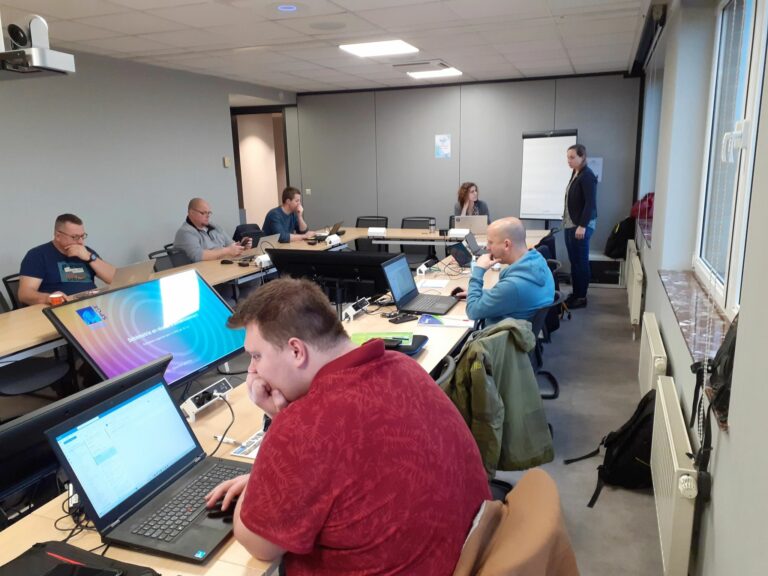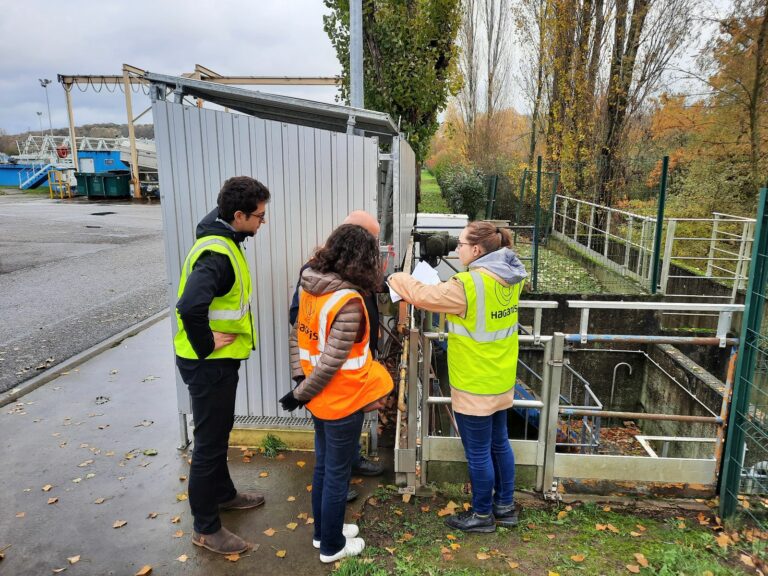Training objectives
- Gain a hydraulic understanding of a flow measurement point in a sewer network or wastewater treatment plant.
- Gain a physical understanding of the hydraulic operation of a measuring point in order to identify potential problem areas (steep slope, presence of a flap valve, risk of downstream influence, deformation of the measuring device, etc.).
- Identify and quantify the hydraulic characteristics needed to assess the hydraulic operation of a measuring point, and therefore the recommendations to be made.
3D EAU training
Flow measurement in wastewater systems


Program
Day 1 is aimed at a wide audience (field operatives, technicians, engineers, etc.) and will illustrate :
– measurement sites and issues through practical case studies: instructional videos filmed on a network or in a station (storm overflow weir, pumping station overflow with or without caisson, gauging channels, etc.).
– hydraulic phenomena at play (torrential flow, hydraulic overflow, downstream influence, control point, etc.) thanks to videos shot in the laboratory.
The 2nd day is aimed at technicians and engineers. In particular, they will see the implementation of field cases presented the day before, or examples directly proposed by the participants of this training course.
Day 1
- Regulatory points: A1, A2, A3, A4 and A5
Obligations corresponding to each point
Duration: 0.25 h
- What methods exist for measuring flow?
- Why can flow be calculated on the basis of water level measurements?
- What phenomena can render this flow measurement method ineffective?
- Impact of torrential flow on flow measurement?
- Impact of downstream influence on flow measurement?
Duration: 2h
- Presentation of field examples
- Hydraulic phenomena involved
- Going further: what resources are available?
Duration: 0.75h
- Presentation of field examples
- Hydraulic phenomena involved
- Impact of installation faults and deformations on flow measurement
- Further information: what resources are available?
Duration: 1h
- Presentation of field examples
- Presentation of different measurement solutions (with or without caisson?)
- Hydraulic phenomena involved
- Presentation of the COACHS method: what it can do, what it can’t do, orders of magnitude of uncertainties
- Further information: what resources are available?
Duration: 1h25
Duration: 0,5 h
Day 2
Duration: 1h
- Storm overflow vocabulary
- Presentation of the ENGEES technical guide
- Notions of precision
Application using field examples
Duration: 4h
- Presentation of GUM and ISO 1438 uncertainties
Propagation of uncertainties
Hydraulic calculation methods
Application conditions for these different methods
What can be done outside these application conditions?
Duration: 1.5h
- Questions and answers as you go along
Duration: 1h
Duration: 0,5h
Would you like to find out more about this training course?
Download the training sheet
